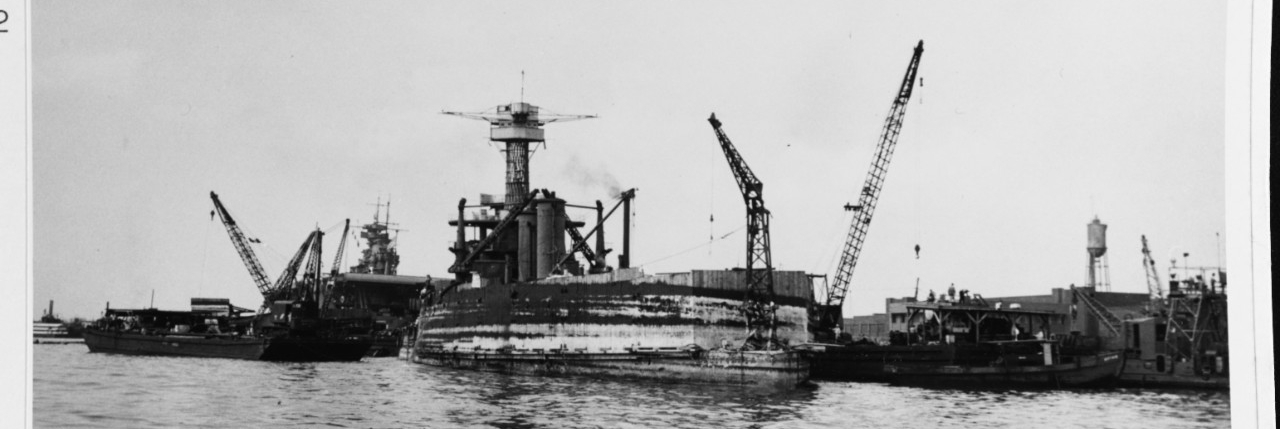
Salvage and Repair of USS California
The second sunken battleship to be successfully salvaged and returned to service was California. She was more seriously damaged than was USS Nevada, the first battleship salvaged. Not only had California's hull been holed by two torpedoes and a bomb, she was also fully submerged to the main deck level and partially underwater at the upper deck. This required that the salvage team construct large wooden cofferdams around her deck edges to bring the ship's effective waterline above the water. These structures covered her port side, forward, and completely surrounded her after deck.
It was also necessary to greatly lighten the ship, so California's "basket" mainmast and nine of her twelve 14" guns were removed, as well as lighter guns, ammunition and much other material and supplies. Much of the latter was in a badly decayed condition, adding to the difficulty of the recovery work. These problems were further compounded by the need to remove human remains and some 200,000 gallons of oil that permeated the ship's interior. As with all other salvage work, cleaning the ship was a massive task and toxic gases and fire were constant risks. At one point, gasoline fumes in California's forward compartments exploded, opening more holes.
Work on California forged ahead during the winter of 1942. As divers penetrated the ship, closing manholes, hatches and other openings, it was found that her basic watertightness was reasonably good, eliminating any need to put patches over her two large torpedo holes. Once preparatory measures were complete, pumps were able to remove the water inside the ship, and keep ahead of remaining leaks, an indication that her loss would have been prevented in the first place if adequate pumps had been available. California was refloated on 24 March 1942 and entered Pearl Harbor's Drydock Number Two on 9 April.
Once in Navy Yard hands, California's wounds were repaired and her steam and electric powerplant was refurbished, a job involving very creative electrical skills. Commander Hyman G. Rickover, later to win fame as the "Father of the Nuclear Navy", was a leading figure in putting the ship's electric alternators and motors back into operating condition. The battleship left drydock on 7 June. After more repairs and reinstallation of her main battery guns, she departed Pearl Harbor on 10 October 1942. Puget Sound Navy Yard then took her in for a massive reconstruction, returning her to the combat fleet in early 1944.


